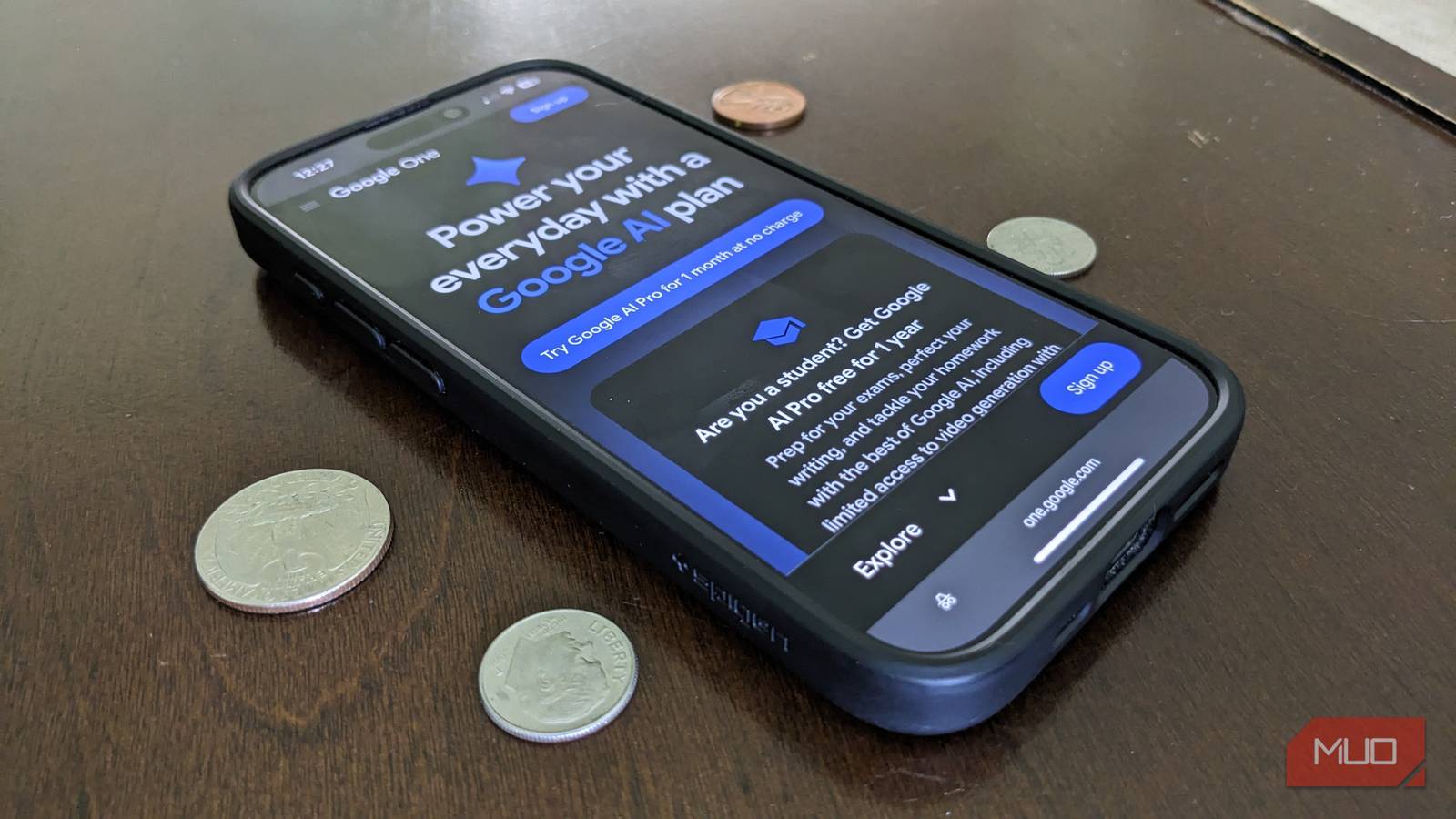I’m happy to spend money on software when it’s worth it; the problem is that plenty of software categories don’t justify their price. Whether one-time purchases or subscriptions, I won’t shell out for PC software that falls into these categories.
We’ve all seen shady PC cleaning apps; they even used to be on TV. But even for legitimate PC cleanup tools, I wouldn’t pay a cent. This is because Windows already includes the core tools (Disk Cleanup and Storage Sense) you need to clean up your system.
There’s no need to spend anything, let alone a subscription, on a PC cleaner. Instead, follow a quick Windows cleanup guide, then set up automatic PC cleanups so you don’t have to spend time on it in the future.
If those aren’t enough for you, free third-party apps can help out. TreeSize is my longtime favorite app for seeing which folders are taking up the most space, though lots of people like WizTree (which I haven’t tried).
6
Antivirus suites
Security suites are one of the subscriptions I can’t believe people spend money on. Windows has strong protection built-in, and the paid versions of these tools don’t increase the core malware protection. Rather, they bundle in tools like VPNs and password managers.
I already have a VPN and password manager I like, so I’m not interested in paying more to switch to ones that are almost certainly worse. I also don’t appreciate how these apps constantly nag free users to upgrade, often with deceptive warnings about “losing protection” if they don’t pay up.
I paid for a lifetime Malwarebytes subscription long ago, and still have it installed. But I wouldn’t pay for it now if the terms of my subscription changed. In fact, it’s been disappointing to see how a once-great app that stood apart from other security tools has succumbed to many of the same tactics.
“Paying for WinRAR” is one of the longest-running jokes online; the file compression and extraction tool is infamous for being a “paid” app with an endless trial that never forces you to pay. There’s zero reason to pay for WinRAR or any tools like it.
Windows has native support for unzipping a lot of compressed file formats; for anything else you come across, 7-Zip does a fine job. I’ve been using 7-Zip for over a decade, and aside from its dated looks, it’s still great. Paying for such a tool wouldn’t benefit me or any other home user.
4
Driver updaters
It’s important to keep your key drivers updated, but driver updaters aren’t the best way to do that. They’re notorious for downloading the wrong drivers, installing them incorrectly, or creating similar issues that are worse than leaving the driver outdated.
Paying for a driver updater tool adds another layer of unnecessary on top of all this. I’m not going to spend money on a tool that might not even update my drivers correctly; the fallout from issues is too high if something goes wrong. That’s the case even with a “free trail”—I’m not trusting a tool to handle these functions when the team behind it can’t even proofread.
Instead, I let Windows Update install basic driver updates, use AMD’s software for GPU updates, and run my motherboard’s utility for the core system drivers. No need to pay, and less risk of something going wrong.
3
Note-taking apps
All the above apps are tools I find useless and don’t think anyone should pay for. This category is different; I recognize the value that paid note-taking tools have for some, but don’t feel the need to use them myself.
I went through all four college years with OneNote, using only a fraction of its capabilities, and never felt the need to upgrade to something more powerful. More recently, I’ve switched to Notion for meeting notes, and I use Simplenote for jotting down quick notes I don’t need for as long. These tools are plenty for me; $15/month or more for a tool like Evernote would be a waste.
There’s already so much I don’t use in Notion; I’d want to exhaust all that before I ever thought about paying for a note-taker app. Apps like Goodnotes look great, but they aren’t for me.
I had the paid version of Nitro PDF from a previous job, which did come in handy for doing heavy PDF editing. But in the years since, I’ve realized there are free tools to handle any edits you might have.
PDFgear is the main one, which I’ve recently downloaded and have been happy with. It includes a range of tools to work with PDFs, including merging, splitting, compressing, and converting. It also allows you to edit a PDF, and all this comes free.
Some folks might need to pay for a PDF editor if they work with them all day. But for my needs, this isn’t worth paying for. PDFs are best when they are the final versions of a document that aren’t meant to change, anyway.
I’ve explained before that I really don’t like AI tools. I occasionally use them to help with ideas or when I can’t find an answer elsewhere online, but I have no interest in AI image generation, having AI “do work” for me, or otherwise spending time with these tools.
I don’t like AI being shoved into everything. It’s wrong about topics I’m knowledgeable in too often for me to trust it with information in areas I don’t know as much about. The deep research capabilities of AI models are the most helpful use case I can see for the paid models; even then, I’d rather watch a human-made YouTube video on a subject to learn more it instead of reading what an AI cobbles together.
Some AI integrations are useful (like Google Sheets letting you write formulas in plain language), but not enough that I’d pay for them.
To some extent, which PC apps are worth paying for depends on how you work. I’m happy to pay for tools that enhance my workflow, but these kinds are either unnecessary or have free alternatives that do all I need.















